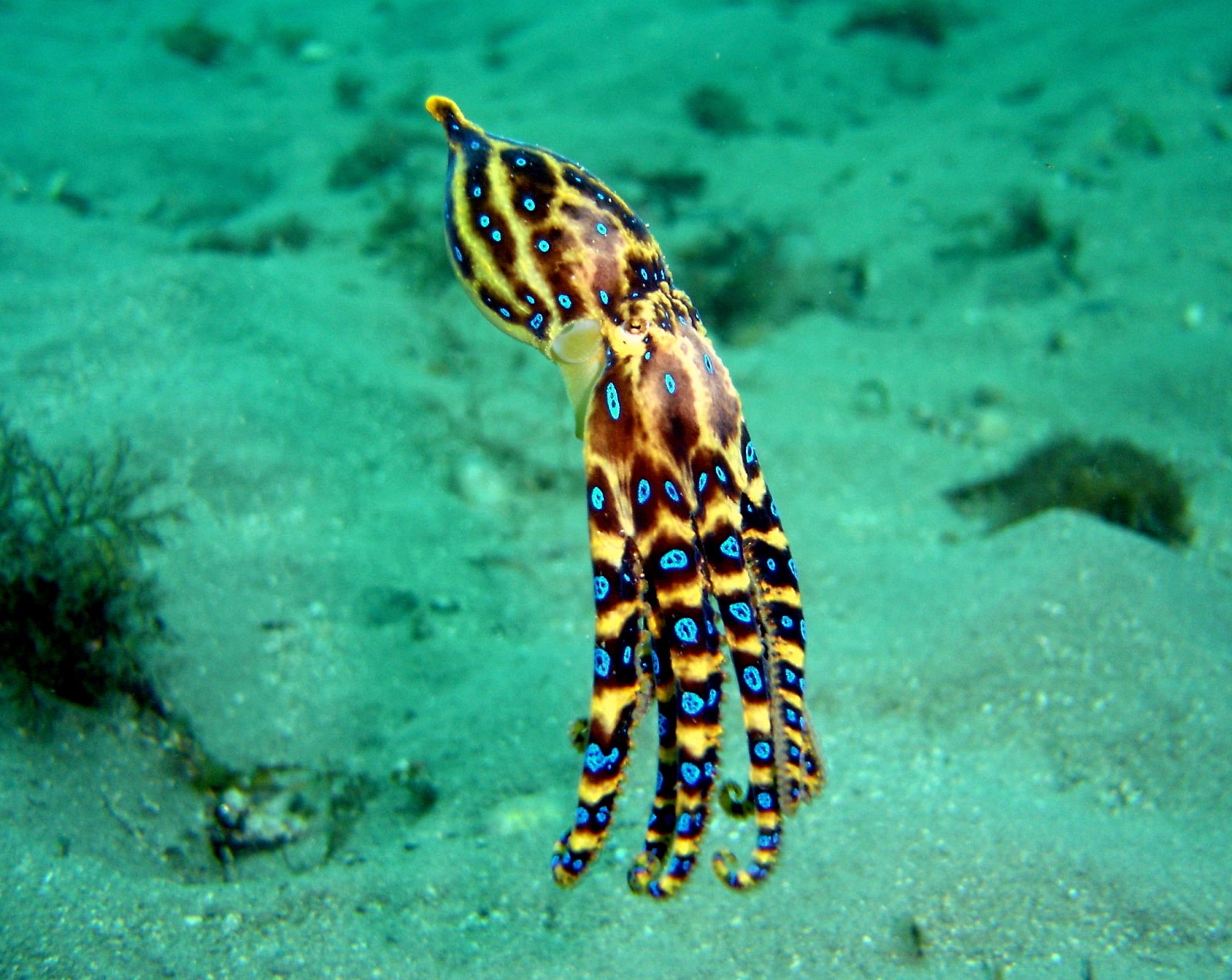Welcome to Facts Vibes! Explore the intriguing world of the blue-ringed octopus with our collection of fascinating fun facts. Discover the unique traits and incredible capabilities of this mesmerizing creature as we unravel the mysteries of the ocean’s enigmatic cephalopod.
Discover the Fascinating World of Blue-Ringed Octopus: Fun Facts and More
The Blue-Ringed Octopus is a marvel of nature. This tiny marine creature may be small, but it packs a powerful punch. Here are some fun facts about this fascinating creature:
- The Blue-Ringed Octopus is known for its vibrant blue rings, which appear when the octopus feels threatened or agitated.
- Despite its small size, the Blue-Ringed Octopus carries enough venom to kill multiple adult humans.
- Found in the tide pools and coral reefs of the Pacific and Indian Oceans, these creatures are masters of camouflage, blending seamlessly into their surroundings.
- Their diet typically consists of small crustaceans and small fish.
- The mating ritual of the Blue-Ringed Octopus is a sight to behold, with intricate displays of color and movement.
- While encounters with these creatures can be dangerous, they are an essential part of the delicate marine ecosystem.
Exploring the world of the Blue-Ringed Octopus reveals a creature both beautiful and deadly, reminding us of the wonders and dangers that exist beneath the waves.
Most popular facts
The blue-ringed octopus is one of the most venomous marine animals in the world.
The blue-ringed octopus is one of the most venomous marine animals in the world.
It can be found in tide pools and coral reefs in the Pacific and Indian Oceans.
Tide pools and coral reefs in the Pacific and Indian Oceans.
Despite its small size, the blue-ringed octopus carries enough venom to kill 26 adult humans within minutes.
The blue-ringed octopus carries enough venom to kill 26 adult humans within minutes despite its small size.
It flashes its characteristic blue rings as a warning when it feels threatened.
The animal flashes its characteristic blue rings as a warning when it feels threatened.
The octopus’s venom contains tetrodotoxin, which is also found in pufferfish and can cause paralysis and respiratory failure.
The octopus’s venom contains tetrodotoxin, which is also found in pufferfish and can cause paralysis and respiratory failure.
There is no antivenom for blue-ringed octopus venom, making their bites potentially lethal.
The blue-ringed octopus bite can be potentially lethal as there is no antivenom available for their venom.
Blue-ringed octopuses are expert camouflage artists, blending seamlessly with their surroundings.
Blue-ringed octopuses are expert camouflage artists, blending seamlessly with their surroundings.
They feed on small crustaceans, fish, and mollusks using their powerful beak-like jaws.
They feed on small crustaceans, fish, and mollusks using their powerful beak-like jaws.
Despite their dangerous reputation, blue-ringed octopuses are fascinating creatures to observe in their natural habitat.
Blue-ringed octopuses are indeed fascinating creatures to observe in their natural habitat.
These octopuses are not aggressive and only bite when they feel threatened or provoked.
Octopuses are not aggressive and only bite when they feel threatened or provoked.
Blue-ringed octopuses are generally shy and will try to avoid confrontation with predators or humans.
Blue-ringed octopuses are generally shy and will try to avoid confrontation with predators or humans.
In some cultures, blue-ringed octopuses are considered a delicacy, despite their deadly venom.
Yes, in some cultures, blue-ringed octopuses are considered a delicacy despite their deadly venom.
Their vibrant blue rings serve as a visual deterrent to potential predators, warning them of the octopus’s toxicity.
The vibrant blue rings serve as a visual deterrent to potential predators, warning them of the octopus’s toxicity.
Female blue-ringed octopuses are larger than males and can lay up to 100 eggs at a time.
Female blue-ringed octopuses are larger than males and can lay up to 100 eggs at a time.
Despite their small size, blue-ringed octopuses are intelligent and have complex nervous systems, allowing them to exhibit sophisticated behaviors.
Despite their small size, blue-ringed octopuses are intelligent and have complex nervous systems, allowing them to exhibit sophisticated behaviors.
In conclusion, the blue-ringed octopus is a fascinating and enigmatic creature that continues to captivate marine enthusiasts with its unique characteristics and intriguing behaviors. Its small size and venomous nature add to its mystique, making it a captivating subject for both researchers and admirers of the natural world. Despite its beauty, it’s important to remember that the blue-ringed octopus is a potentially dangerous animal and should be observed from a safe distance in its natural habitat.
